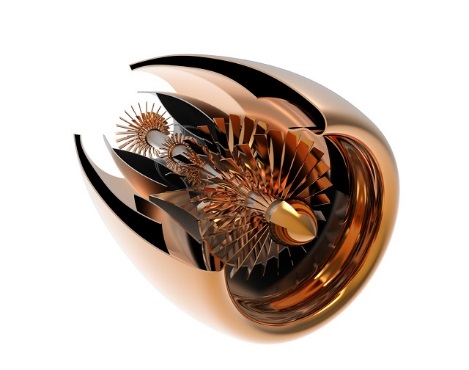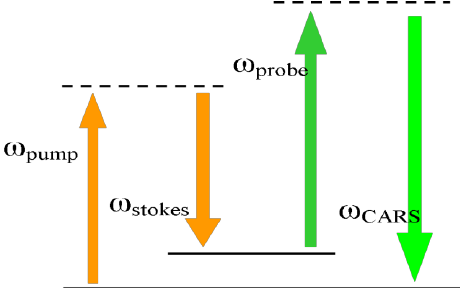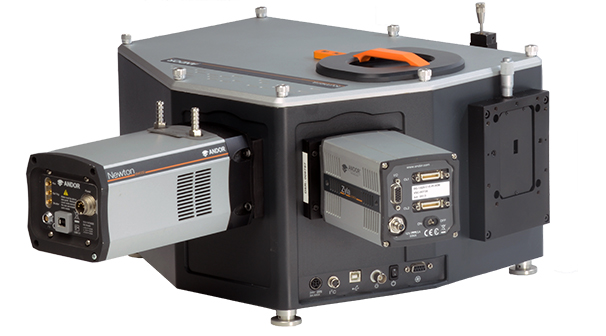Resources
 Part of the Oxford Instruments Group
Part of the Oxford Instruments Group
Expand
Collapse
 Part of the Oxford Instruments Group
Part of the Oxford Instruments Group
Combustion is central to everyday life. With sectors such as vehicle engines and home heating requiring continual efficiency improvements, the ability to study combustion processes is a key research area.
Spectroscopy, in particular Coherent Anti-Stokes Raman Spectroscopy (CARS)[1], is an important research tool for the identification of chemical species and determination of temperature. CARS was first developed in the 1970s [2] as a valuable laser-based technique for combustion diagnostics and concentration measurements. It has since then been used increasingly for studying practical devices such as internal combustion engines.

Figure 1: Jet Engine - Image Credit: olegbush/Shutterstock.com
The technique uses three laser beams that are focused to a common intersection point. These are a pump beam, a Stokes beam and a probe beam, which interact with the sample to produce a coherent optical signal at the anti-Stokes frequency. The first two beams cause an excited state in the chemical species under study. By ‘scanning’ the frequency difference between these initial two laser beams, so that they are in resonance with rotational or vibrational modes of the molecule, an oscillating polarization is induced. The third laser beam is scattered off the resonant frequency and the CARS signal occurs as a detectable beam in a fixed direction.

Figure 2: Energy diagram describing CARS process
The signal is directed to a detector (spectrometer), and the width and shape of the spectral lines provide temperature and concentration information. A CARS signal is totally temperature dependent with the population of excited states following the Boltzmann distribution. The temperature dependence of CARS spectra make it a ‘gold standard’ technique for monitoring combustion processes and the temperature of hot gases and flames.
Applications
CARS has proven to be useful in providing ‘species’ selective microscopy using vibrational spectroscopy, in addition to providing the temperature measurement required in the study of combustion diagnostics. In turbulent flames, one of the most important parameters is the magnitude of temperature fluctuation [3]. One important application is in the design of combustion chambers and gas dynamic sections of rocket and aviation engines. Recent work on fuel air plasma kinetics, plasma assisted ignition and flame holding highlighted the importance of spectroscopic methods such as CARS and Raman. New plasma ignition processes in aircraft engines, were studied with complex mixtures of hydrocarbon fuels. [4].
In 2013 Dedic, Miller and Gord [5] used new faster picosecond and femtosecond laser CARS to examine the combustion dynamics (rotational and vibrational Raman) of simple chemical species such as N2, O2, CH4 and CO2 present in various flame conditions. This fast pulse laser method used Shamrock 303i and Newton CCD detection (from Andor) to provide multi-species high speed interference free measurement and much higher temperature sensitivity over a wider range of flame conditions than previously. These high speed laser investigations have provided a new dimension to high sensitivity and high speed CARS spectroscopy, which is now leading to modified hybrid CARS techniques [6].
A refinement of CARS called RCARS (broadband Rotational Coherent Anti-Stokes Raman) was detailed in a 2014 PhD thesis [7]where heat release studies of plasma-assisted combustion were performed in low pressure fuel-air mixtures. These experiments provided a new low pressure, low temperature diagnostic system for the combustion of hydrogen and ethylene mixtures. The spectra in these experiments were detected using a back-illuminated electron multiplying charge coupled device (EMCCD) Newton camera from Andor. The electron multiplying feature significantly improved the sensitivity for the new RCARS methodology.
Advantages
Coherent Raman techniques (CARS) are proving their worth by providing much higher signal levels compared to spontaneous Raman signals [8]. The coherent Raman signal is a laser-like beam emitted in a well-defined direction, which makes the detection easier and background free. CARS methods are now being widely used as an alternative to conventional Raman spectroscopy due to high signal levels, intrinsic temperature dependence and the coherent nature of the signal. CARS methods are now becoming refined by the use of high speed femto and picosecond lasers [6][7][9][10]. This uses a short probe pulse and the probe and pulse laser excitation are separated for improved resolution and an improved signal-to-noise ratio. Overall this leads to less coherent interference, enhanced specificity, simplified spectral analysis and suppression of non-resonant background signals [9].

Figure 3: Kymera motorised series research-grade high performance spectrographs. Image Credit: Andor Technology Ltd.
Andor provide an easy to use modular range of high sensitivity detectors/cameras and spectral instruments, which provide a variety of options as well as seamless, real-time control through the intrinsic Solis software platform and the ability to link to laboratory data systems. The Newton CCD is the ‘flagship’ spectrographic camera/detector with excellent spectral resolution, high sensitivity, spectral rates of up to 1600 and first-rate detection range flexibility. An EMCCD (electron multiplier charge couple device) array version of the Newton is also available to provide ultra-sensitivity right down to single photon capture for low light applications. The Kymera 328i is a fully automated high throughput imaging, quad turret spectrograph with patented adaptive focus designed for both routine measurement and low-light applications and has the versatility to make it ideal for CARS experiments. Overall Andor provide a comprehensive range of instruments, which allows researchers to put together the ideal spectrographic system to meet their needs.
References
